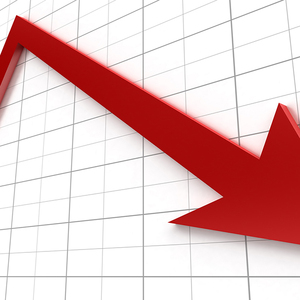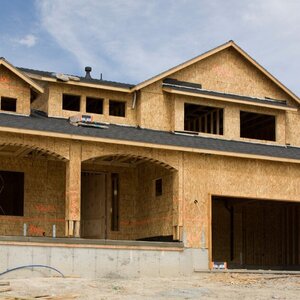The WPJ
THE WORLD PROPERTY JOURNALReal Estate Facts Not Fiction
Residential Real Estate News

Case-Shiller Home Price Index Reports Sixth Consecutive Month of Positive Gains
Residential News » Residential Real Estate Edition | By Michael Gerrity | September 29, 2009 9:45 AM ET
(News Source: S&P/Case-Shiller Home Price Indices)
(NEW YORK, NY) -- Data through July 2009, released today by Standard & Poor's for its S&P/Case-Shiller Home Price Indices, the leading measure of U.S. home prices, show that, although still negative, the annual rate of decline of the 10-City and 20-City Composites improved compared to last month's reading. This marks approximately six months of improved readings in these statistics, beginning in early 2009.
The chart above depicts the annual returns of the 10-City and 20-City Composite Home Price Indices. The 10-City and 20-City Composites declined 12.8% and 13.3%, respectively, in July compared to the same month last year. All 20 metro areas also showed an improvement in the annual rates of decline, with July's readings compared to June.
"The rate of annual decline in home price values continues to decelerate and we now seem to be witnessing some sustained monthly increases across many of the markets" says David M. Blitzer, Chairman of the Index Committee at Standard & Poor's. "The two composites and all metro areas are showing an improvement in the annual rates of return, as seen through a moderation in their annual declines. Looking at the monthly data, the 10-City and 20-City Composites and 18 of the 20 metros areas increased in July. In addition, both Composites and 13 of the MSA have had at least three consecutive months of positive prints. These figures continue to support an indication of stabilization in national real estate values, but we do need to be cautious in coming months to assess whether the housing market will weather the expiration of the Federal First-Time Buyer's Tax Credit in November, anticipated higher unemployment rates and a possible increase in foreclosures.
The chart above shows the index levels for the 10-City and 20-City Composite Indices. As of July 2009, average home prices across the United States are at similar levels to where they were in the autumn of 2003, From the peak in the second quarter of 2006, the 10-City Composite is down 33.5% and the 20-City Composite is down 32.6%.
In terms of annual declines, despite the overall improvement, all metro areas and the two composites remain in negative territory, with 14 of the 20 metro areas and both composites in double digits. On the positive side, Cleveland, Dallas and Denver are nearing in on positive territory with July readings of -1.3%, -1.6% and -2.9%, respectively. Las Vegas posted its lowest index level in July since its peak in August of 2006, resulting in a 54.8% peak to trough decline.
In the monthly data, only Seattle and Las Vegas showed monthly declines. Thirteen of the 20 metro areas had three or more consecutive positive returns; and 16 MSAs and the two composites reported monthly returns greater than +1.0%.
The table below summarizes the results for July 2009. The S&P/Case-Shiller Home Price Indices are revised for the 24 prior months, based on the receipt of additional source data. More than 22 years of history for these data series is available, and can be accessed in full by going to www.homeprice.standardandpoors.com.
Since its launch in early 2006, the S&P/Case-Shiller Home Price Indices have published, and the markets have followed and reported on, the non-seasonally adjusted data set used in the headline indices. For analytical purposes, Standard & Poor's does publish a seasonally adjusted data set covered in the headline indices, as well as for the 17 of 20 markets with tiered price indices and the five condo markets that are tracked.
A summary of the monthly changes using the seasonally adjusted (SA) and non-seasonally adjusted (NSA) data can be found in the table below.
The S&P/Case-Shiller Home Price Indices are published on the last Tuesday of each month at 9:00 am ET. They are constructed to accurately track the price path of typical single-family homes located in each metropolitan area provided. Each index combines matched price pairs for thousands of individual houses from the available universe of arms-length sales data. The S&P/Case-Shiller National U.S. Home Price Index tracks the value of single-family housing within the United States.
The index is a composite of single-family home price indices for the nine U.S. Census divisions and is calculated quarterly. The S&P/Case-Shiller Composite of 10 Home Price Index is a value-weighted average of the 10 original metro area indices. The S&P/Case-Shiller Composite of 20 Home Price Index is a value-weighted average of the 20 metro area indices. The indices have a base value of 100 in January 2000; thus, for example, a current index value of 150 translates to a 50% appreciation rate since January 2000 for a typical home located within the subject market.
Sign Up Free | The WPJ Weekly Newsletter
Relevant real estate news.
Actionable market intelligence.
Right to your inbox every week.
Real Estate Listings Showcase
Related News Stories
Residential Real Estate Headlines
- Orlando's Housing Market Continues to Slow Down This Fall
- U.S. Mortgage Originations Predicted to Hit $1.95 Trillion in 2024
- Construction Input Costs in America Uptick in September
- Global Home Price Growth Further Slows in Mid-2023
- Home Values in U.S. Begin to Slip Late Summer
- Foreclosure Filings in U.S. Spike 34 Percent Annually in Q3
- U.S. Mortgage Credit Availability Upticks in September
- Retail Market is a Bright Spot for Manhattan Real Estate
- Residential Rents in U.S. Dip in September Amid Growing Apartment Supply
- U.S. Mortgage Rates Continue to Surge in October
- Greater Las Vegas Home Sales Down 10 Percent Annually in September
- Most U.S. Homebuyers Say Buying a Home is More Stressful Than Dating in 2023
- Mortgage Applications Dive 6 Percent Last Week in America
- Despite Peak Interest Rates, Global Housing Markets Improved in Q2
- U.S. Architecture Billings Index Reports Softening Business Conditions in August
- U.S. Home Price Growth Pace Upticks Again in August
- 10,000 Residential Properties Have Negative Equity in Hong Kong
- U.S. Pending Home Sales Dropped 7.1 Percent in August
- U.S. Mortgage Rates Reach Highest Level in 23 Years
- American Bankers See Weakening Credit Conditions Through End of 2024
- Palm Beach Area Residential Sales Uptick in August
- Driven by High Mortgage Rates, Pending Home Sales Drop 13% Annually in September
- Miami Area Residential Sales Slip 13 Percent Annually in August
- U.S. Home Sales Dip 15 Percent Annually in August
- Home Flipping Transactions Down in 2023, Profits Up
- U.S. Listings Inventory Rises 4 Percent in August
- The Fed Leaves Rates Alone for Now in September
- Mortgage Applications Uptick in U.S. Amid High Rates
- Single Family Rent Growth in U.S. Drops to 3-Year Low in July
- Greater Orlando Area Home Sales Down 16 Percent Annually in August
- Home Purchase Cancellations Accelerating in the U.S.
- U.S. Construction Input Costs Uptick in August
- U.S. Mortgage Credit Availability Upticks in August
- Monthly Property Foreclosure Activity Upticks in U.S.
- Greater Palm Beach Area Residential Sales Dip 5 Percent Annually in Mid-2023
- NAR Predicts Several U.S. Housing Market Outcomes
- Demand for U.S. Housing is Dropping as Prices Rise
- U.S. Homeowner Equity Decrease by $287 Billion Over the Last 12 Months
- 1 in 5 Millennials Think They'll Never Own a Home in America
- 1 in 8 San Francisco Home Sellers Is Losing Money at Closing in 2023
Reader Poll
Marketplace Links
This website uses cookies to improve user experience. By using our website you consent in accordance with our Cookie Policy. Read More





